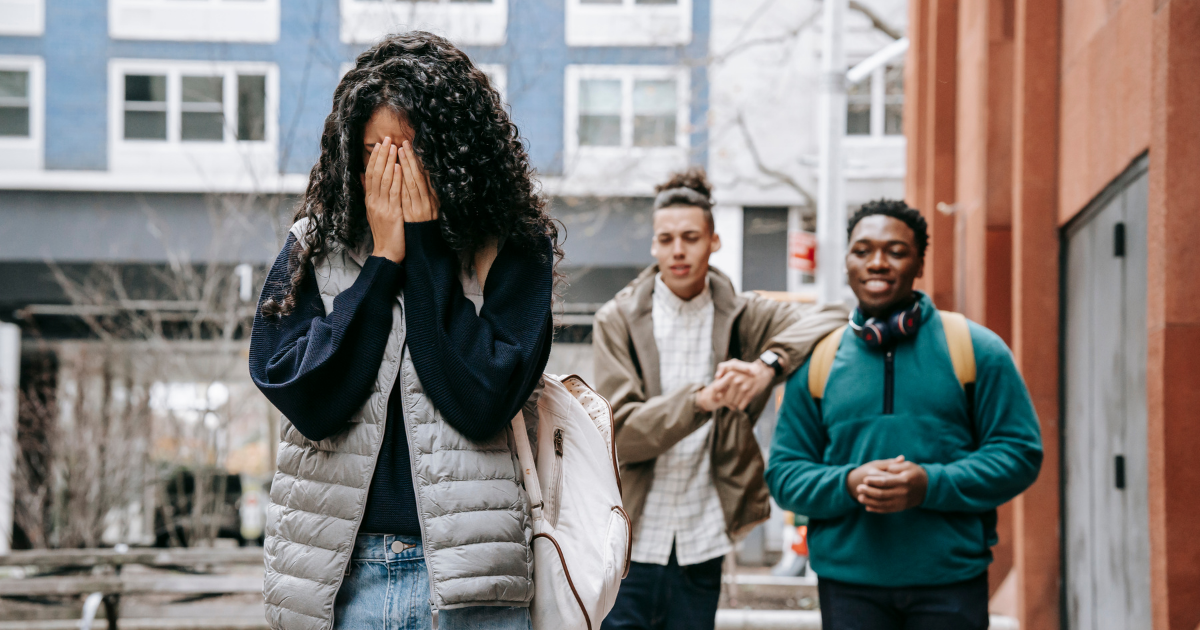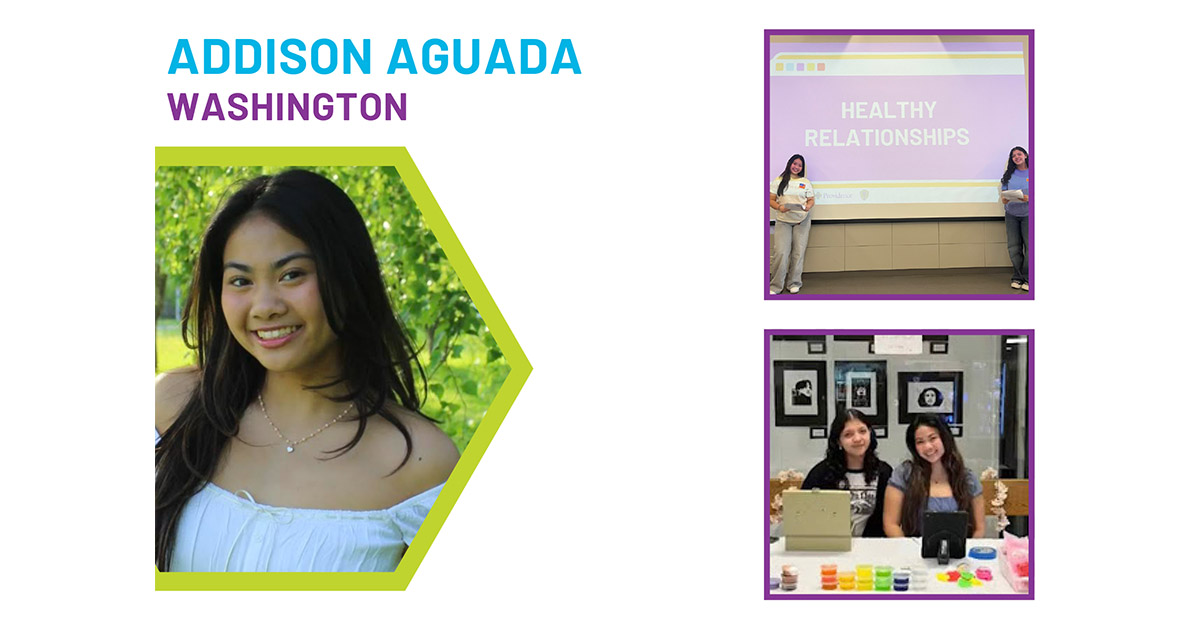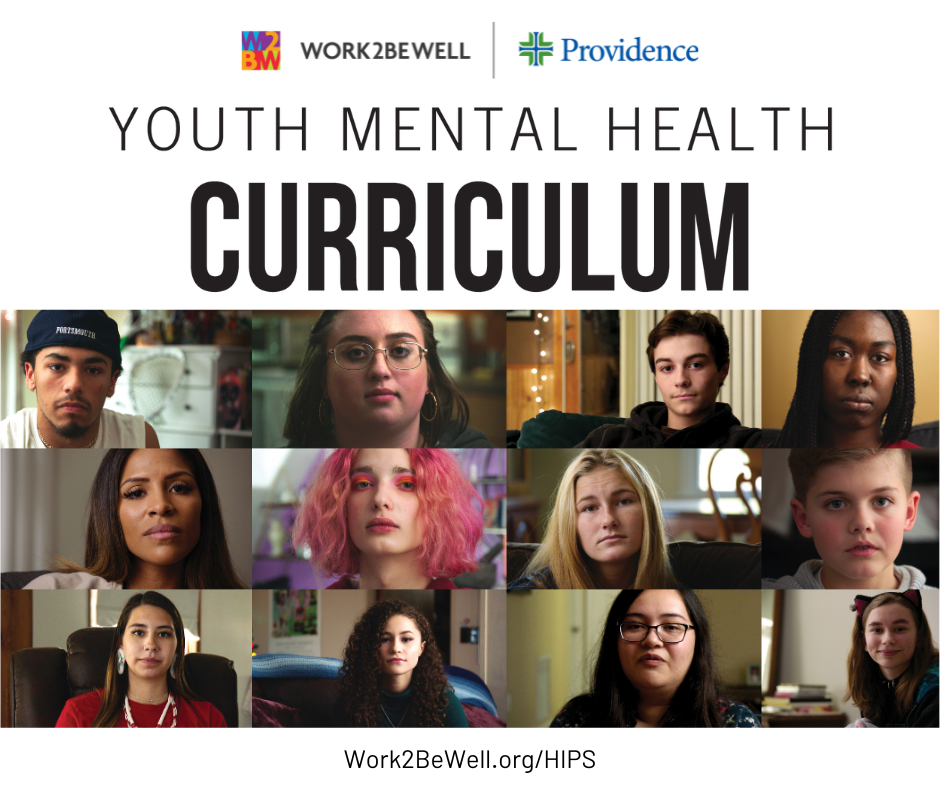The way we prevent bullying in our schools, and in our communities, is by addressing the problem together. Whether you’ve felt bullied yourself or witnessed its effects on someone else, or even if you’ve bullied someone before, bullying diminishes all of us and our potential to be well.
So let’s talk about bullying, and not about bullies. The problem isn’t just a handful of bad eggs making trouble for the rest of us. To prevent bullying, we’re going to have to think of this as a cultural problem. And for a cultural change, we all have to be part of the solution. Here’s five ways you can do your part to prevent bullying.

1. Know what to look for.
Bullying doesn’t always look as clear cut as it does in the movies. We know what physical bullying looks like; it’s easy enough to spot someone being shoved around in the halls, or being tripped and kicked, or when someone’s belongings are vandalized. But there are other, more common types of bullying too that may be harder to spot.
Verbal bullying
- The majority of bullying isn’t physical. Verbal bullying is any ongoing name-calling, insults, threats any hurtful words. Verbal bullying might target someone’s appearance, their religion, orientation, race, or any other attribute you can think of.
Relational and social bullying
- Relational bullying is whenever someone tries to deliberately exclude someone else from the group or to deliberately damage someone’s reputation or their relationships. It might be exclusion from a study group, a lunch table, or any other social activity. It may also look like someone spreading nasty rumors around school.
Cyberbullying
- When relational or verbal bullying happens online, it’s called cyberbullying. It can happen on our phones, on social media, an online forum anywhere with a screen.
Really, bullying is any unwanted aggressive or unkind behavior that keeps repeating or seems likely to repeat. Usually it comes with an imbalance of power too maybe the aggressor is physically larger, or maybe they’re more popular at school. Often, it’s that power imbalance that allows the bullying to continue. While some types of bullying are easier to see and to stop than others, to really address bullying we must keep an eye out for all types of bullying behavior.
2. Always be looking.
Once you’re clear on what to look for, keep your eyes open. Keep listening. Maybe you’ll witness an act of bullying in action, or more likely, you’ll hear about an act of bullying secondhand.
We need you to be present in your classrooms, present in the hallways, present in the quad. Bullying gets to exist by the generosity of our inattention. To stop it, we must spot it, and see it for what it is.
3. When you see something, say something.
If you witness anything that looks like bullying to you, it’s time to be brave and be the one to step up. We have to protect each other and speak out on each other’s behalf. What you say, and who you say it to, is going to depend on the circumstance. You’ll have to use your best judgment.
Intervening directly
- If it feels safe, you can intervene directly, but be careful and stay calm. Ask the person being bullied if they want to get out of there with you. Be their exit strategy. Take them somewhere that’s safe and give them reassurance.
- Did you know when a peer intervenes in a bullying situation, most of the time the bullying stops within 10 seconds? The vast majority of young people disapprove of bullying; sometimes we’re all just hoping someone else will be brave so that we don’t have to.
Saying something to the aggressor
- If you speak to the person who’s doing the bullying, focus on their behavior rather than accusing them of being a bully. Bullying is something that people do, it isn’t something that they are. You’ll have an easier time reaching them, and a better chance of pushing them to change their behavior, if you focus on the consequences of their actions. Help them see that they’re really hurting someone. Ask them if that’s really what they want to be doing. Challenge them to be better.
- Bullying happens when we stop trying to imagine people fully’when we dehumanize each other. So we have to model the change we want to achieve. Imagine this person as more than just a bully, but as someone who’s flawed just like the rest of us. Imagine them as someone who’s capable of doing better next time. To prevent bullying, everyone is going to have to be part of the solution.
- It’s possible that the bullying is being done by someone you consider a friend. We know it’s hard to call out friends on their behavior, but a true friend isn’t there just to make us feel better; a true friend is someone who helps us be better. So speak up, because this is a lesson your friend needs to learn right now, and you are in a unique place to help them learn it.
Saying something to the person being bullied
- You can speak to the person who’s being bullied even after the situation is over. Tell them you saw what happened and that it wasn’t fair. If it’s social or relational bullying, the person who was bullied might not even realize they’ve been victimized at all.
- Ask if they’d like to talk, or if there’s any way you can help. Listen to them. Then you can try suggesting that they go speak to a teacher, or parent, or whichever authority figure seems appropriate.
Saying something to an adult
- If you’re aware of an ongoing bullying situation and you don’t know how to stop it, talk to an adult you trust. Don’t leave it alone in hopes that it will work itself out. Being silent only helps the bullying continue.
- If it doesn’t feel safe to intervene, or if you’re worried the person being bullied is at risk of physical harm, go tell an adult immediately. Find a teacher or any figure of authority at hand.
4. Be mindful of your own behavior.
Sometimes we may not realize the little ways we contribute to a situation that leaves someone feeling bullied, or excluded, or valueless. So take a minute and really think about it. To the best of your ability, are you being inclusive? Are you practicing compassion? Are you treating everyone with dignity?
Is there anyone you and your friends repeatedly make jokes about, even if you don’t make these jokes in front of that person? When we repeatedly poke fun at someone behind their back, we create an environment where it’s easier for someone else to tease them to their face. We need to be mindful of the social environments we play a role in. To prevent bullying, we all have to do better than we’ve done so far.
And if someone says you’ve hurt their feelings, don’t jump straight to being defensive. Use this as a chance to really look at your behavior. Try to see things from their point of view. Think about the sort of person you want to be known as. How do you want others to feel around you? Now think: does your behavior always match that? It can be really hard to be totally honest about ourselves, but this is how we grow.
5. Be a friend.
Maybe the greatest way you can help prevent bullying is by being a friend to someone who could really use it. Go pay a compliment to someone who needs a compliment. Invite someone to hang out. Learn something about them. Sometimes the best way to stand up for each other is just to stand with each other.
If you or someone you know is having a hard time and would like to talk to someone, there are teens who want to listen at Teen Line. Call 310-855-4673, or text TEEN to 839863. Teen Line is open for calls from 6-10 PM California time. Another contact is Oregon Youth Line Call 877-968-8491 or text TEEN2TEEN to 839863.



